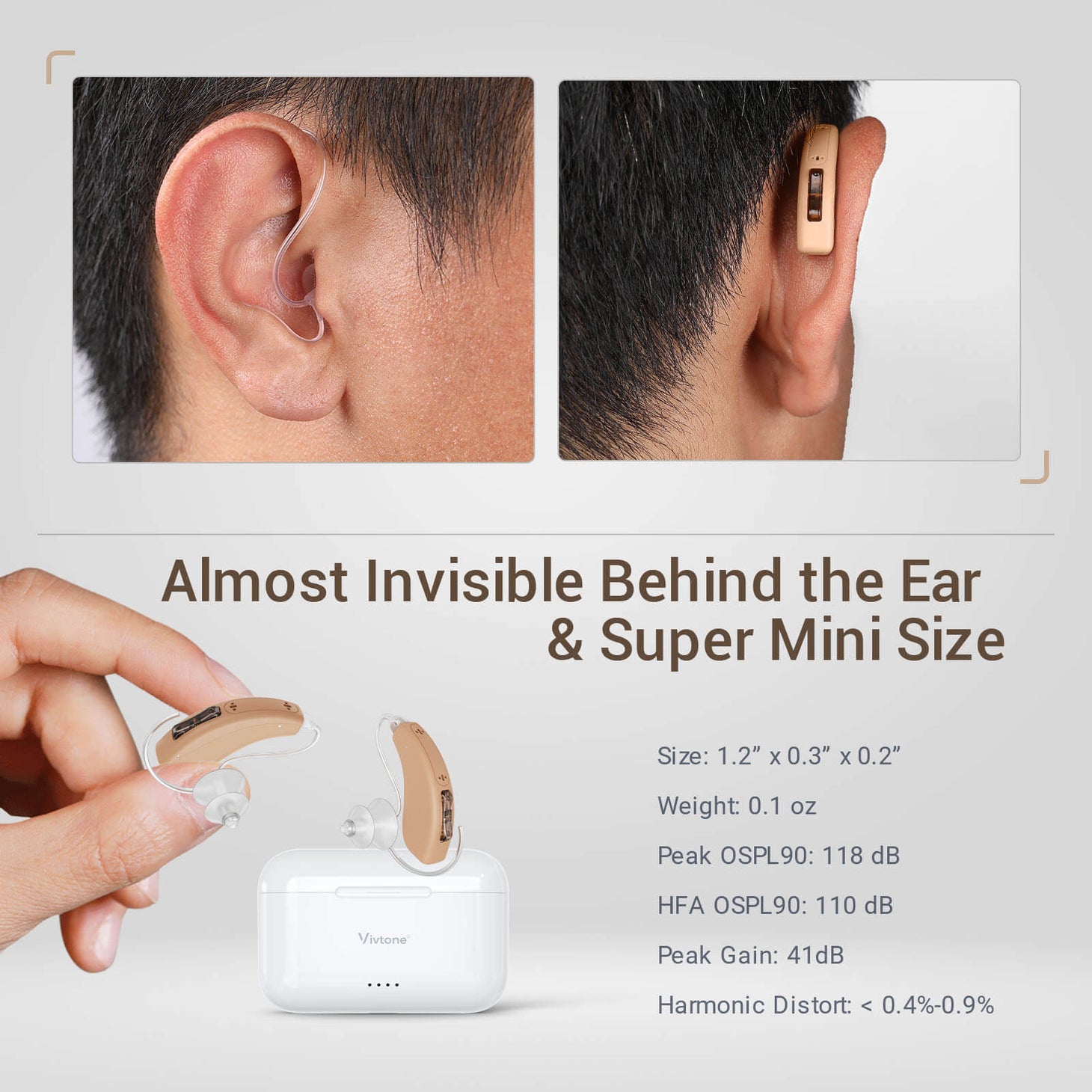In the realm of audiology, technological advancements have revolutionized the way we perceive and address hearing loss. One of the most significant breakthroughs is the advent of invisible hearing aids equipped with Bluetooth technology. This innovation not only enhances auditory experiences but also integrates seamlessly into our digital lives. In this blog post, we delve into the intricacies of these cutting-edge devices, exploring their benefits, functionalities, and the transformative impact they have on users.

Understanding the Latest Technological Innovations in Invisible Hearing Aids: The Bluetooth Advantage
Invisible hearing aids have come a long way from their bulky predecessors. Today, they are designed to be discreet, fitting snugly within the ear canal, making them virtually undetectable. The integration of Bluetooth technology into these devices has opened up a plethora of possibilities, enhancing their functionality and user experience.
The Evolution of Hearing Aids
Historically, hearing aids were cumbersome and conspicuous, often leading to social stigma and discomfort. However, with advancements in miniaturization and digital technology, modern hearing aids have become smaller, more efficient, and aesthetically pleasing. The latest invisible hearing aids are a testament to this evolution, offering superior sound quality and comfort without compromising on performance.
Seamless Connectivity with Bluetooth
One of the most remarkable features of contemporary invisible hearing aids is their Bluetooth capability. This technology allows users to connect their hearing aids to various devices such as smartphones, tablets, and televisions. For instance, a user can stream phone calls, music, and other audio directly to their hearing aids, providing a personalized and immersive auditory experience. This seamless connectivity not only enhances convenience but also ensures that users remain engaged and connected in their daily lives.
Enhanced User Control and Customization
Bluetooth-enabled hearing aids offer unparalleled control and customization options. Through dedicated mobile apps, users can adjust volume levels, change listening programs, and even monitor battery life. This level of control empowers users to tailor their hearing experience to their specific needs and preferences. For example, in a noisy restaurant, a user can switch to a program designed to filter out background noise, ensuring clearer conversations.
Improved Sound Quality and Clarity
Another significant advantage of Bluetooth technology in invisible hearing aids is the enhancement of sound quality. Advanced algorithms and digital signal processing techniques work in tandem to deliver crisp and clear audio. This is particularly beneficial in challenging listening environments, such as crowded places or during phone calls. Users can enjoy a more natural and immersive sound experience, making it easier to engage in conversations and enjoy various forms of entertainment.
Understanding the Latest Technological Innovations in Invisible Hearing Aids: The Bluetooth Advantage
The integration of Bluetooth technology in invisible hearing aids represents a paradigm shift in the field of audiology. It bridges the gap between hearing aids and modern digital devices, offering users a holistic and connected auditory experience. As technology continues to advance, we can expect even more innovative features and improvements in the realm of invisible hearing aids.
In conclusion, the latest technological innovations in invisible hearing aids, particularly the incorporation of Bluetooth technology, have significantly enhanced the lives of individuals with hearing loss. These devices offer a perfect blend of discretion, functionality, and connectivity, ensuring that users can enjoy a seamless and enriched auditory experience. As we continue to explore and understand these advancements, it is evident that the future of hearing aids is not only promising but also profoundly transformative.








